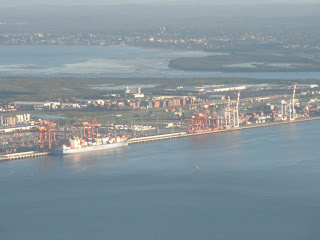Unseasonal snow, high winds, heavy rains, increased heat, damage to property, increased hospital admissions and deaths. Around the world reports of damage from extreme weather events are heard - "unprecedented", "rainfall deficits", "longest drought", "crop devastation", "unseasonal weather", "homes without power for days", "highest known temperatures exceeded", "all time high"; this it seems, is the new normal locally and globally.
In recent human history, extreme weather events have, statistically, been relatively rare. Due to our changing climate, the atmosphere is warmer due to complex inter-relationship of events. For instance, warm air is able to hold more water whilst being less stable, leading to more volatile weather patterns.
Worldwide, heat waves are longer and hotter, heavy rain and flooding is more frequent. Severe storms are increasing in frequency and severity. As is expected, variation in weather patterns is evident and affected seasonally and by local geography such as rivers, lakes and mountains.
Seafront properties take the brunt of severe winds, rain and storm surges.
Computer modelling showing expected range of naturally occurring temperature variations both with and without human contribution shows that human contribution has increased the likelihood of hotter overall temperatures. (For why scientists talk about probabilities rather than certainties see A Advertising here) Upper atmosphere jet streams, swirling ocean currents, the melting of glaciers and permafrost all play a complex and interlinked part in our global weather systems.
People around the world are experiencing the effects of increasingly severe and more frequent storms. The insurance industry is already factoring extreme weather damage into their premiums; they understand that damage will be significant in years to come and have been proactive in encouraging governments to adapt and prepare. They've also been working with industry to address future needs as a result from climate change and the impacts on property and threat to life from global weather instability whether it be preparing for increased heat waves, snow, wind, cyclones or hurricanes.
Low lying industrial areas are at risk of flooding and damage during severe storms. Toxins, oils and other contaminants run into surrounding waterways creating havoc for shipping and poisoning fisheries and marine life to say nothing of loss of work and income by those affected. Cleanups are costly and can take many years leaving affected areas uninhabitable.
The heart break from rebuilding shattered lives is impossible to calculate in financial terms.
Remote areas are affected with roadways being washed away leaving farm properties stranded and creek beds susceptible to increased erosion from vehicle traffic.
In the recent past, communities affected by storm damage have relied on governments to assist with rebuilding and other support, but that appears to be less reliable as governments are increasingly stretched financially and decide how to most effectively divvy up their budget.
They may choose not to assist as more and more regions are impacted and infrastructure will be left to local communities to manage as best they can. Food security, transport breakdown, water impurities and general displacement impact on communities worldwide and will continue to do so as we experience this change.
Encouragingly though, communities around the world are planning with hope for the future and coming together to share information, resources and ideas to improve the resilience of their towns and regions. They're working together to create a vision for their new communities based on common goals related to making their communities vibrant places to live post Peak Oil. See also H Health here. More detailed information on the Energy Descent Action Plan here.
Last year I wrote about the X-factor that enables some people to speak out and stand up to workplace bullies. Here.
.





3 comments:
Looks like we all need to head for higher ground (literally).
As much as I am enjoying it, I'm spending a lot of time wondering this year, when we are unseasonably warm and all the plants are three weeks ahead of schedule in their blooming. Lilacs in April? Lovely, but unheard of. Is this just a hiccup, or a sign of something bigger?
Hi Sue .. the weather is playing havoc around the world - we had our summer in February/March - now it's April rolling into May it's cold and wet - however we need the rain!
It's a challenge - I feel we all need to do more for ourselves .. sadly we're pretty selfish and won't put ourselves out ..
Great series .. cheers Hilary
Post a Comment